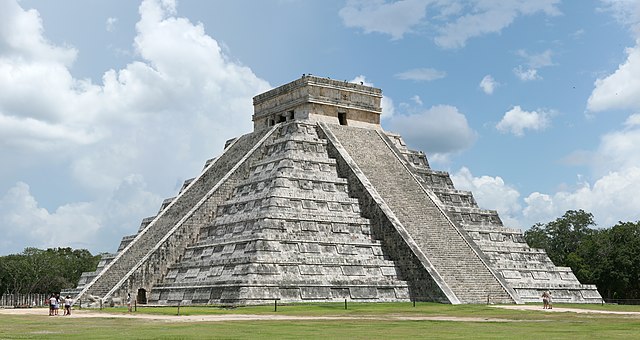Copán is an archaeological site of the Maya civilization in the Copán Department of western Honduras, not far from the border with Guatemala. It is one of the most important sites of the Maya civilization, which was not excavated until the 19th century. The ruined citadel and imposing public squares reveal the three main stages of development before the city was abandoned in the early 10th century.
One of two simian sculptures on Temple 11, possibly representing howler monkey gods.
Stela H at Copán, commissioned by Uaxaclajuun Ub'aah K'awiil.
Ceramic lid shaped to represent K'inich Yax K'uk' Mo', recovered from the tomb of the 7th-century king Smoke Imix, under Temple 26.
Stela 63, probably dating to the reign of K'inich Popol Hol.
The Maya civilization was a Mesoamerican civilization that existed from antiquity to the early modern period. It is known by its ancient temples and glyphs (script). The Maya script is the most sophisticated and highly developed writing system in the pre-Columbian Americas. The civilization is also noted for its art, architecture, mathematics, calendar, and astronomical system.
El Castillo, at Chichen Itza
Detail of Lintel 26 from Yaxchilan
Stela D from Quiriguá, representing king Kʼakʼ Tiliw Chan Yopaat
Calakmul was one of the most important Classic period cities.








